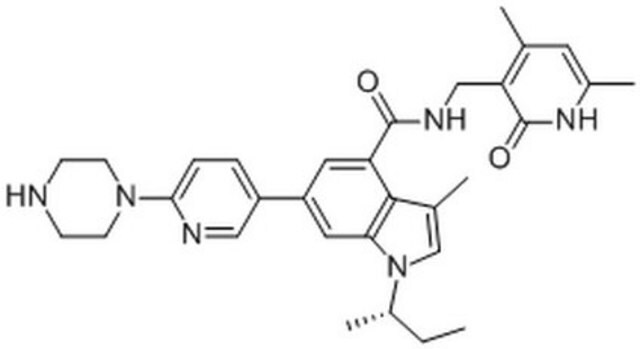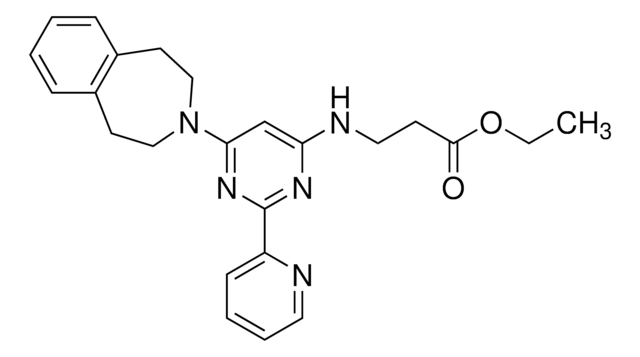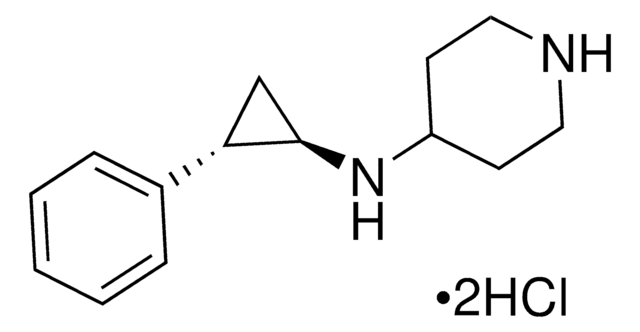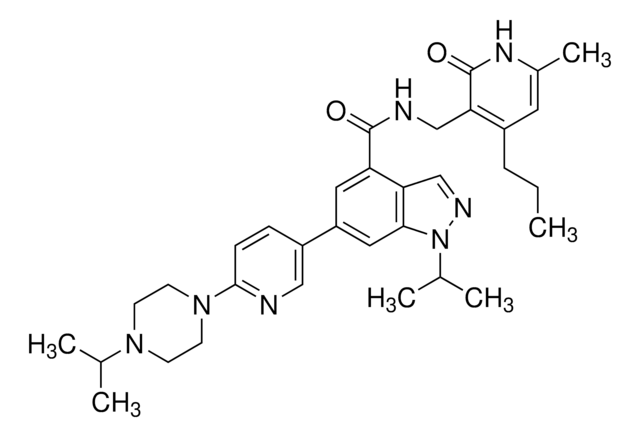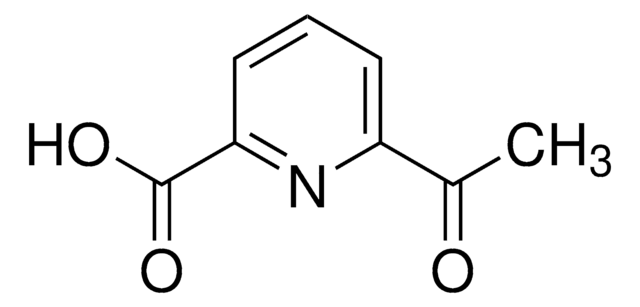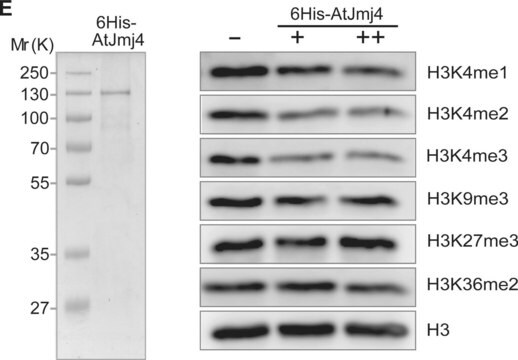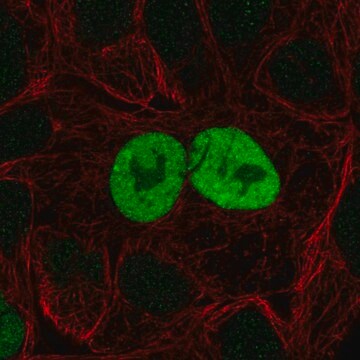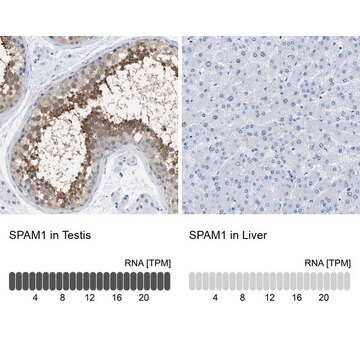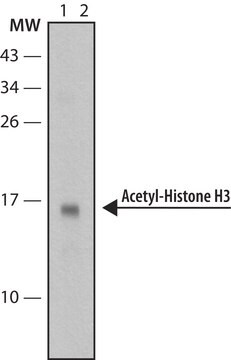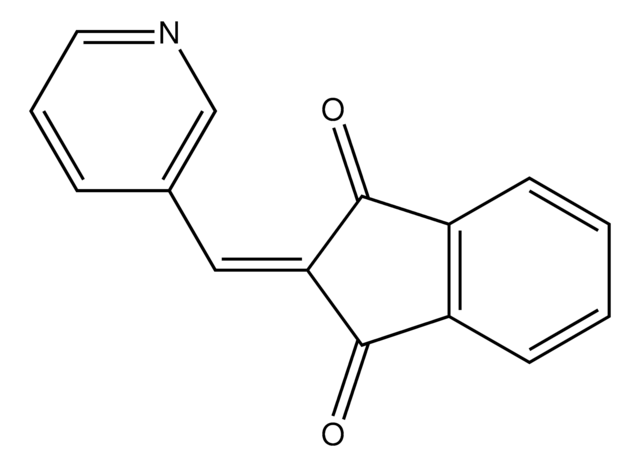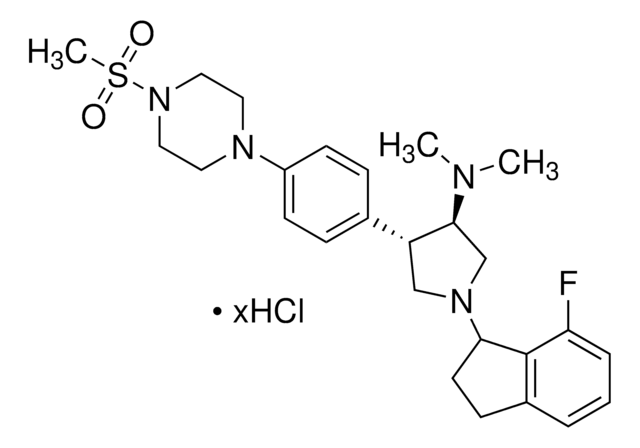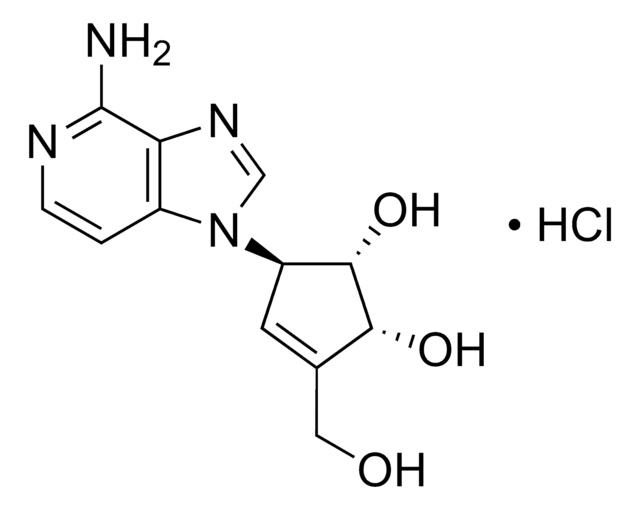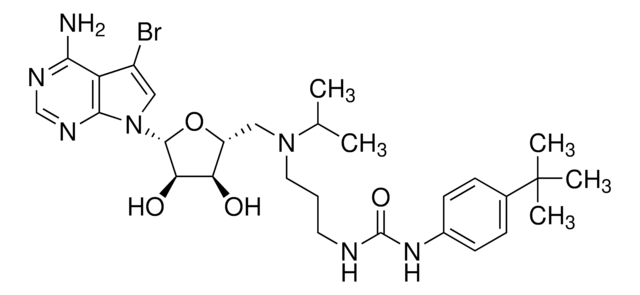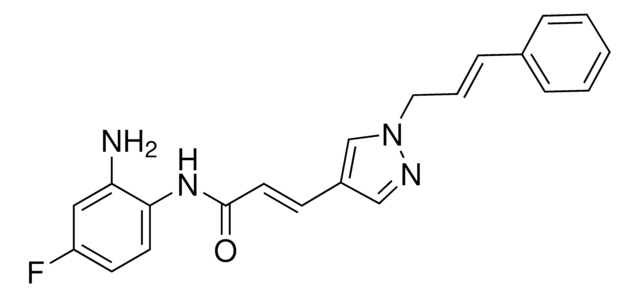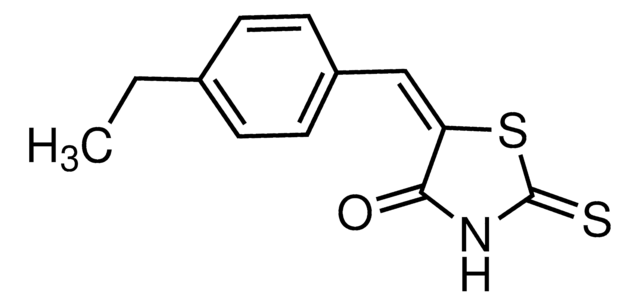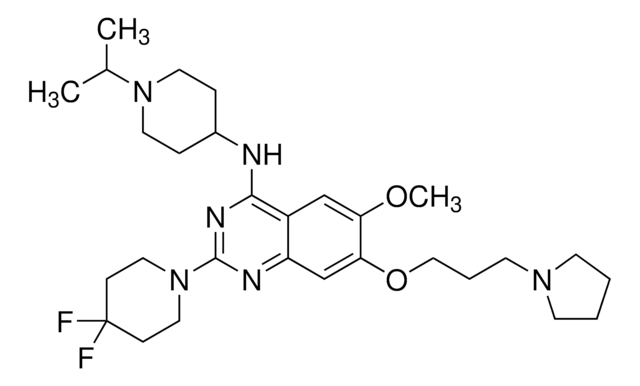Kluczowe dokumenty
SML0766
GSK343
≥98% (HPLC)
Synonim(y):
N-[(1,2-Dihydro-6-methyl-2-oxo-4-propyl-3-pyridinyl)methyl]-1-(1-methylethyl)-6-[2-(4-methyl-1-piperazinyl)-4-pyridinyl]-1H-indazole-4-carboxamide, N-[(6-Methyl-2-oxo-4-propyl-1,2-dihydropyridin-3-yl)methyl]-6-[2-(4-methylpiperazin-1-yl)pyridin-4-yl]-1-(propan-2-yl)-1H-indazole-4-carboxamide
About This Item
Polecane produkty
Poziom jakości
Próba
≥98% (HPLC)
Formularz
powder
kolor
, white to beige to brown
rozpuszczalność
DMSO: 15 mg/mL, clear
temp. przechowywania
2-8°C
ciąg SMILES
CN(CC1)CCN1C2=NC=CC(C3=CC4=C(C=NN4C(C)C)C(C(NCC5=C(CCC)C=C(C)NC5=O)=O)=C3)=C2
InChI
1S/C31H39N7O2/c1-6-7-23-14-21(4)35-31(40)26(23)18-33-30(39)25-15-24(16-28-27(25)19-34-38(28)20(2)3)22-8-9-32-29(17-22)37-12-10-36(5)11-13-37/h8-9,14-17,19-20H,6-7,10-13,18H2,1-5H3,(H,33,39)(H,35,40)
Klucz InChI
ULNXAWLQFZMIHX-UHFFFAOYSA-N
Powiązane kategorie
Zastosowanie
- as an inhibitor of enhancer of zeste homolog 2 (EZH2) to assess the impact of chromatin condensation on cell migration
- as histone methyl transferase inhibitor, to suppress the Polyandrocarpa misakiensis, mitochondrial non-coding-region (NCR) PmNCR reporter gene expression, facilitated by TC14-3
- as a supplement in the growth medium to inhibit the generation of H3K27me3 or to inhibit RNA polymerase II
- as EZH2 inhibitor to treat castration-resistant neuroendocrine prostate cancer (CRPC-NE)
Działania biochem./fizjol.
To learn about other SGC chemical probes for epigenetic targets, visit sigma.com/sgc
Cechy i korzyści
Inne uwagi
produkt powiązany
Hasło ostrzegawcze
Warning
Zwroty wskazujące rodzaj zagrożenia
Zwroty wskazujące środki ostrożności
Klasyfikacja zagrożeń
Acute Tox. 4 Oral
Kod klasy składowania
11 - Combustible Solids
Klasa zagrożenia wodnego (WGK)
WGK 3
Temperatura zapłonu (°F)
Not applicable
Temperatura zapłonu (°C)
Not applicable
Wybierz jedną z najnowszych wersji:
Masz już ten produkt?
Dokumenty związane z niedawno zakupionymi produktami zostały zamieszczone w Bibliotece dokumentów.
Klienci oglądali również te produkty
Nasz zespół naukowców ma doświadczenie we wszystkich obszarach badań, w tym w naukach przyrodniczych, materiałoznawstwie, syntezie chemicznej, chromatografii, analityce i wielu innych dziedzinach.
Skontaktuj się z zespołem ds. pomocy technicznej